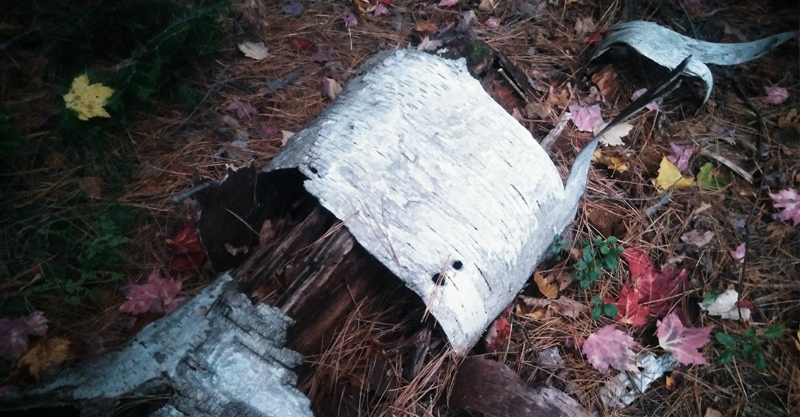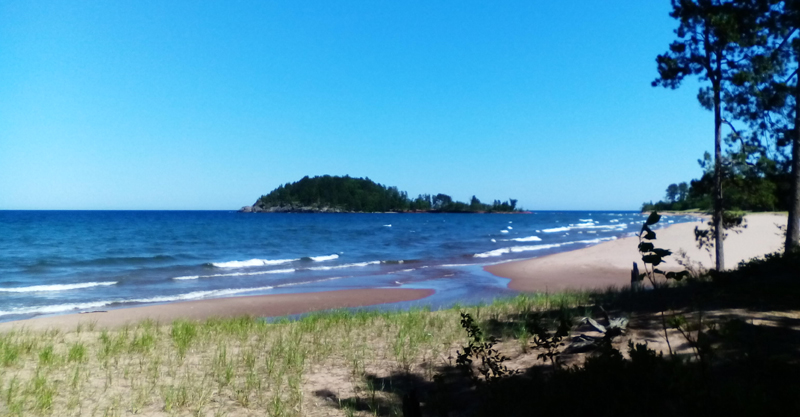The Gift of Water
as seen in the Marquette Monthly February, 2017
By Jon Magnuson
“Praised be my Lord, for our sister water.”
– St. Francis of Assisi,”Canticle of the Sun”
Not along ago, I sat one morning in a kitchen over a cup of coffee with the father of my son-in-law, on the edge of the sleepy town of Pueblo, Colorado. We were talking about the complex problem of water rights and the specter of the region’s diminishing aquifers and melting snow packs on the nearby Sangre de Cristo Mountains, part of the rugged thread of high country peaks weaving down North America from Canada to Mexico.
I learned some things.
First, that water is a much fought-over and disputed commodity in America’s southwest. Competing interests from municipalities and neighboring states are now purchasing water resources that once used to irrigate farms in southwestern Colorado. Those farmlands are now turning back into desert.
Secondly, the crisis of diminishing water resources is critically impacting the largest cities in the Sun Belt, with water rates soaring. The probability is high for an unprecedented immigration of population moving north. It’s not unreasonable to surmise that in fifty to a hundred years, tens of hundreds of thousands of people will make this permanent move, if for no other reason than the ready availability of fresh, drinkable water in the Great Lakes Basin.
If you think this scenario alarmist, consider the following: The price of water is increasing, indisputably, throughout the world. According to Earth Policy’s latest report, over the last five years municipal water rates have increased by an average of 27% in the United States, 45% in Australia, 50% in South Africa, and 58% in Canada. In Tunisia, in the last decade, the price of irrigation water has risen over 400%. The price people pay for water is largely determined by three factors: the cost of transportation from source to user, total demand, and government subsidies. However, most citizens, no matter their country, are unaware of the true costs of water because governments subsidize, and in so doing, obscure, the actual cost.
Ready for the hard news?
The best step in moving toward a more rational water management is probably to place a price on water that reflects its true value and scarcity. That will mean higher—much higher—costs. Pricing water at actual cost will likely generate strong resistance and public outrage in the short run. But, if our recent experiences with oil are any indication, in the long run such pricing will lead to substantial efficiencies in the use of water. Though painful at first, those higher prices will lead households, farmers, and industries to use water more efficiently. Pricing water to more closely reflect its real cost will likely stimulate similar conservation efforts.
Who is ready to accept this?
The worst-case scenario for our future would likely be privatization of water resources. In these circumstances, a few companies and individuals will reap enormous economic profit, but at the expense of the rest of the world. This could become the scenario in the lives of our grandchildren. If history teaches us anything, that possibility is real.
The Northern Great Lakes Water Stewards, an interfaith effort to protect, preserve, monitor and sanctify the lakes, rivers, and streams of the Upper Peninsula, is one expression of a new emerging consciousness around living responsibility and gracefully on our planet. We are working with other nonprofit organizations to build a deeper relationship with and better knowledge of the watersheds, streams of our neighborhoods, and in so doing, saving ourselves from scenarios like the one above. The word “sanctify” in our mission statement finds its roots in the wisdom of the world’s religious traditions. It suggests framing our use of this earth’s gifts with prayers, hymns, and rituals of reverence and respect.
As it happens, the future is already upon us in the Great Lakes Basin. Already, we face the challenge of responsible water stewardship. Aquila Resources, a Canadian owned mining company, despite widespread public opposition, has now obtained permits from the State of Michigan to construct a new sulfide mine next to the Menominee River near the Wisconsin border. Estimated precious metals to be extracted by the proposed mine will total 16 million tons. The contaminated, sulfide acid-producing waste rock left behind on the landscape will amount to 54 million tons. Experts on both sides of the issue agree on one thing: streams and water aquifers near this proposed project will need to be monitored for heavy metal toxic contamination for an astonishing 500 years!
The next time you pour a glass of water, whisper the prayer of St. Francis. Give thanks for where we live. And ask for courage and wisdom to prepare for what is coming.
WATER STEWARDSHIP TIPS
Become acquainted with the work of the U.P Environmental Coalition and their efforts to bring a deeper appreciation of the threats to our water resources. Know that unlike most available public information about our lakes and rivers, their research is not sponsored by corporate, profit-oriented interests. (Ref: upenvironment.org)
Deepen your knowledge about how the human body utilizes water. Be attentive to proper hydration (6-8 glasses of water a day) and practice gratitude when you invite your body to receive this gift at the beginning of each day.

“The Gift of Water” columns are offered by the Northern Great Lakes Water Stewards and the Cedar Tree Institute, joined in an interfaith effort to help preserve, protect, and sanctify the waters of the Upper Peninsula.




